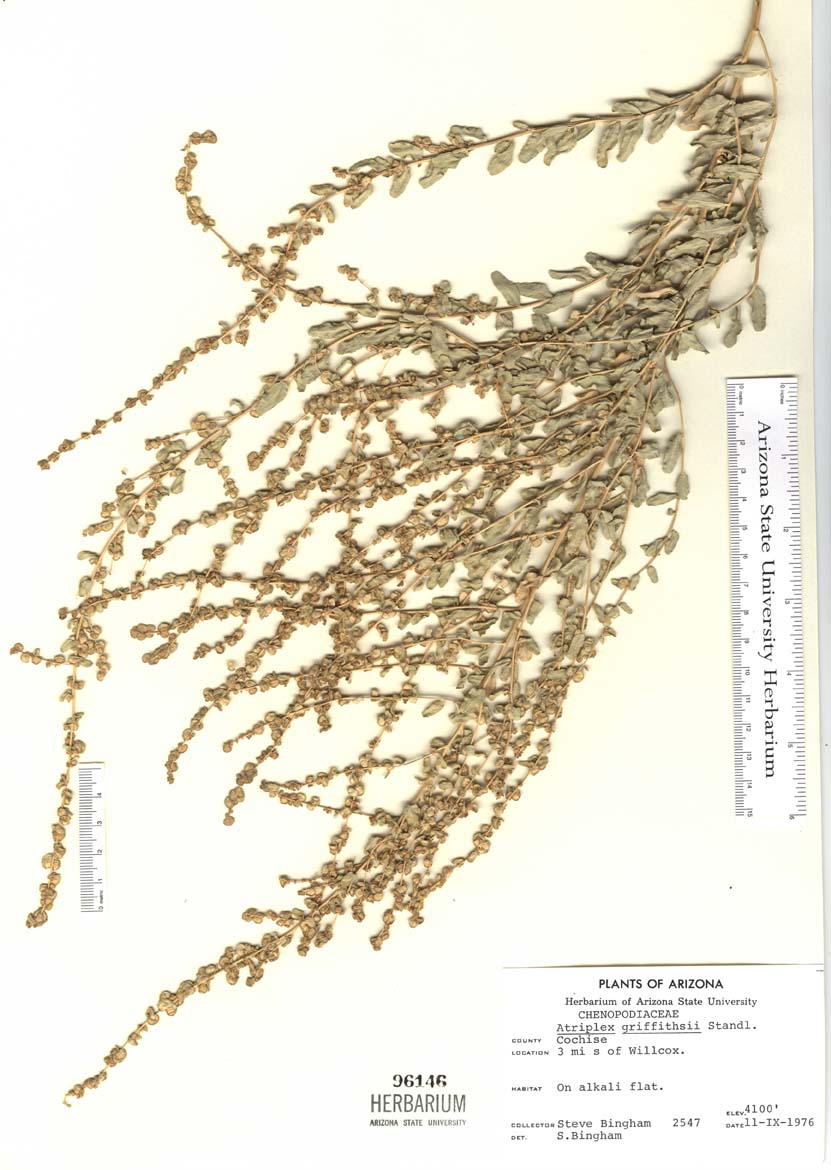
|
Family: Amaranthaceae |
Herbs or shrubs, annual or perennial, monoecious or dioecious, often with bladderlike hairs that collapse to form silvery or scurfy (mealy) vesture, less often with elongate trichomes. Leaves persistent or tardily deciduous, alternate, partially opposite, or opposite, sessile or petiolate; blade entire, serrate, or lobed, with venation either of Kranz-type or normal dicotyledonous type, axillary buds inconspicuous or lacking. Inflorescences axillary or terminal; flowers borne in axillary clusters or glomerules, or in terminal spikes or spicate panicles. Staminate flowers with 3-5-parted calyx, ebracteate; stamens 3-5. Pistillate flowers lacking perianth, pistil naked, or in few species with (1-)3-5-lobed perianth, commonly enclosed within pair of foliaceous bracteoles; stigmas 2. Fruiting bracteoles enlarged in fruit, of various shapes and variously connate or not, thickened, and appendaged; pericarp free, tightly enclosed in the fruiting bracteoles. Seeds flattened, mainly vertical; radicle inferior, lateral, or superior. x = 9. Many species of Atriplex are halophytic, others occupy soils low in dissolved particulates. Prior to the 1900s, the genus Suckleya was treated within Atriplex, but its obcompressed fruiting bracteoles are quite unlike anything in Atriplex, and the plants were recognized as a distinct genus.
Monoecious; staminate fls with 3-5 sep and as many stamens; pistillate fls all or mostly enclosed individually by 2 broad bracteoles, without perianth except in no. 2 [Atriplex arenaria Nutt.]; ovary wall very thin; styles 2, filiform; embryo annular, the radicle variously inferior (near the base, and directed downward or horizontally) to median (lateral, directed upwards) or superior (near the summit, and directed upwards); annual (incl. all our spp.) or perennial herbs or shrubs; fls minute, sessile or short-pedicellate in glomerules or borne singly in the axils or in terminal spikes or panicles; lvs usually opposite below and alternate above, ±mealy at least when young, sometimes later green and glabrate. Spp. 3-6 form a morphologically confluent, mostly self-pollinated polyploid series, whose members are sharply distinct at some but not all points of contact. 100+, widespread. Gleason, Henry A. & Cronquist, Arthur J. 1991. Manual of vascular plants of northeastern United States and adjacent Canada. lxxv + 910 pp. ©The New York Botanical Garden. All rights reserved. Used by permission. |
This project was made possible in part by the Institute of Museum and Library Services [MG-70-19-0057-19].
Powered by Symbiota



